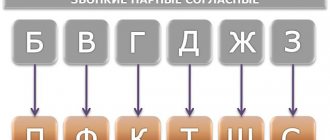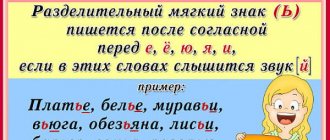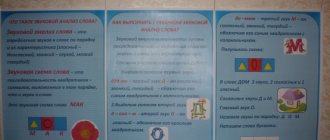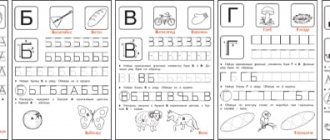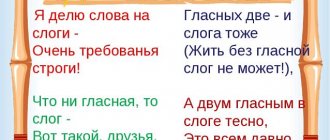Sound automation [h]
To automate pronunciation, the following sequence of exercises is used:
- first pronouncing direct and then reverse syllables: cha-ach, uch-chu, cho-och;
- pronouncing one- and two-syllable words with [h] at the end: ball, game, bulls, bird;
- pronunciation of words where the sound is in the middle: barrel, duck, spiders;
- pronouncing words that begin with [h]: teapot, cast iron, Chukotka;
- reading or pronouncing phrases with sound, pairing them: tea cups, leather suitcase, stump-stump, cat-cat.
- pure phrases and poems saturated with this sound are the final part of speech therapy work on automation.
Automation of the sound [h] in straight syllables
Automation of the sound [h] in reverse syllables
Automation of sound [h] in words
Automation of sound [h] in phrases and sentences
Automation of sound [h] in pure language
Automation of sound [h] in poems
Differentiation of sounds [h]-[t], [h]-[ts], [h]-[sch],
The problem of separation of sounds [h]-[t] is typical for children who are learning to pronounce this sound in one language. The differentiation of sounds [ts]-[h]” and [h]-[h] is relevant for children from bilingual families. This replacement is typical for foreign languages of the Altai family.
For differentiation, the child is asked to pronounce syllables, words, phrases, sentences containing the sounds [h]-[t], [h]-[ts], [h]-[sch].
Differentiation of sounds [h]-[t] in syllables
Differentiation of sounds [h]-[t] in words
Differentiation of sounds [h]-[t] in words
Differentiation of sounds [h]-[t] in words
Differentiation of sounds [h]-[t] in riddles
Differentiation of sounds [h] - [t] in poetry
Differentiation of sounds [ch] - [ts] in syllables
Differentiation of sounds [ch] - [ts] in words
Differentiation of sounds [ch]—[ts] in phrases
Differentiation of sounds [ch] - [ts] in poetry
Differentiation of sounds [h]—[w'] in syllables
Differentiation of sounds [h]—[w'] in words
Differentiation of sounds [h]—[w'] in texts
Differentiation of sounds [h]—[w'] in poetry
Classes on production, automation and differentiation of sound [h] are recommended to last up to 10 minutes for children 4-5 years old and up to 20 minutes for 6-7 year olds.
Sound setting [h]
The articulation of the sound [H] can be set in 3 ways:
- Using part [t']: pronounce this sound at a very fast pace so that the tip of the tongue reaches the base of the upper incisors from the side of the palate. Then begin to wrap it, as if stroking the tubercle at the roots of the teeth - the alveoli. And at the same time you need to stretch the corners of your mouth wide, as if in a smile.
- Using two components [t'] and [sch']: smiling widely, first slowly, and then faster and faster, pronounce alternately [t'] and [sch']. Speed allows them to merge and achieve clear articulation of sound.
- Explain sound formation by breaking down the process into stages: for the exercise you need a piece of paper or a chocolate bar. It rests on the tip of the tongue and the child is asked to stick it over the hole, which is located between the upper incisors on the inside. To do this, you must first feel this place, and then send your tongue on a “task” with a piece of treat. To fix chocolate or paper, you need to apply force, which will serve as articulatory gymnastics and allow you to automate the movement of the tongue.
In all cases, it is necessary to sit the child in front of a mirror and focus on ensuring that he follows his movements in the reflection. Some parents ignore this rule, but speech therapy sessions are much more productive with visual control of the positions of the mouth and tongue.
Articulation gymnastics
First, you need to “warm up” your tongue, because this organ is a large muscle. Here are some exercises to help prepare her for work:
- “Cleaning your teeth”: you need to run your tongue along the inside of your upper teeth. This needs to be done at increasing speed. It is important that it comes into contact with the base of the teeth - the place where they meet the gum. This is where the alveoli are located.
- “Mushroom”: this task will help those children who had problems with other sounds due to a short frenulum. The baby needs to stretch his lips in a smile and press his wide tongue against the upper palate. The wider the mouth is open, the better the result.
- “Sweets”: put toffee or chocolate on the tip of your tongue and stick it to the upper palate near the front teeth. It is important to keep your mouth wide open. Unlike the sound production exercise, the child does not need to pronounce it, because the task is to strengthen the muscle.
If the child likes to do this, then it can be placed at the end of the articulation block and from there move on to pronouncing the sound [Ch]: first, the exercise is without sound, and then it is complicated by the need to pronounce [Ch].
Correct articulation
The exercises described above clearly demonstrate that the production of the sound [H] is possible in several ways, which differ in the method of sound production:
1. Use of a reference sound and correct placement of successive movements of the tongue:
- The baby is asked to always pronounce soft [t'] and at the same time concentrate on ensuring that the tongue is tightly adjacent to the alveoli. Then the specialist shows how to curl the tongue towards the larynx from this position. A spatula is used for this. If the isolated sound [t'] is difficult for him, you can replace it with [at'];
- the child is asked to say [t'] and at the same time press the corners of his mouth with his fingers, stretching his lips out like a tube. With this position of the lips, the tongue automatically slides back.
2. Using the effect of merging parts [H]:
- you need to ask the baby to consistently but quickly pronounce the hard voiceless [t], followed by [sch]. At first this is done slowly, and then with increasing tempo of acceleration. It is important that the pronunciation is formed while exhaling.
3. Exercise using a playful form of imitation:
- imitate the chirping of a grasshopper or “call” ducks – “kacha-kacha”;
- read poetry to the child: the adult reads the lines and pauses in those places where the child should utter a sound.
4. Use reference sounds:
- ask to pronounce the sound “t”, focusing on the correct position of the tongue. As the child pronounces, accompany the sound formation with the movement of a bending palm.
It is difficult for a non-specialist to determine which method is suitable for a child. To do this, parents can alternately use each of these exercises. Based on the results of the work, its effectiveness is assessed. The main thing is not to stop at the fact that the child can differentiate the sounds [t'] and [h], because the articulatory skill has not yet been consolidated.
